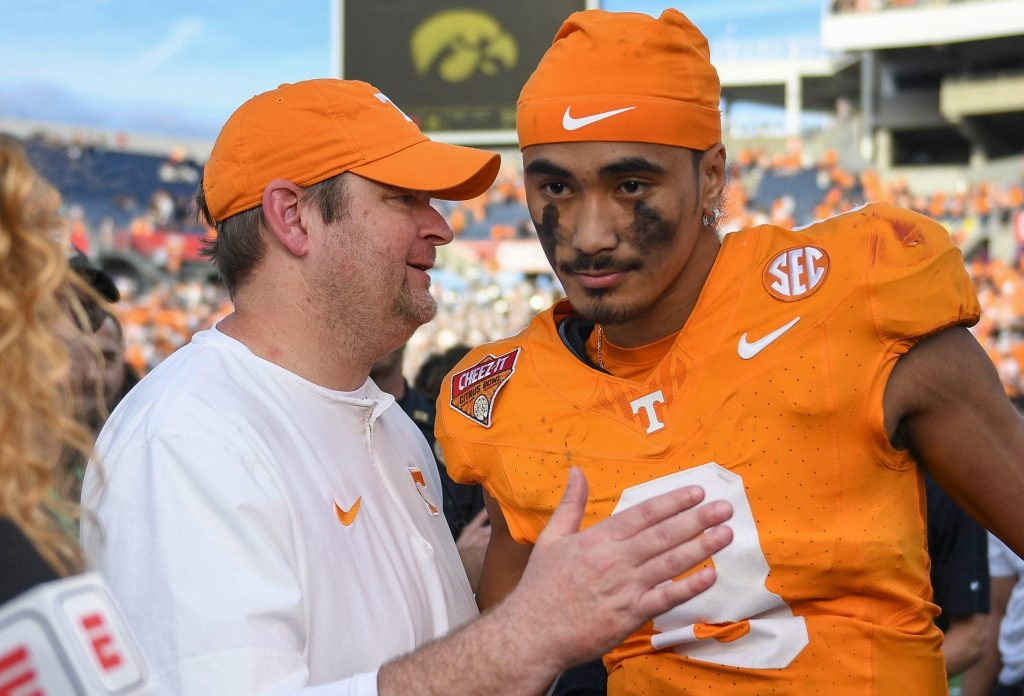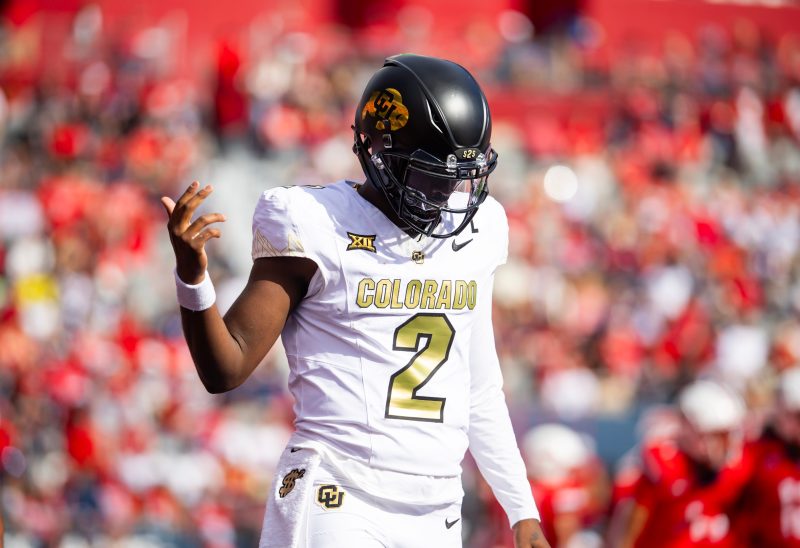College football burns as sport’s leaders eat cake and avoid hard truths

The absurdity would be hilarious if it weren’t so dangerously reckless.
College football is dying, everyone. And the sport’s leaders don’t really care.
Somewhere in Las Colinas, Texas, in a posh $600 a night five-star hotel, the muckety-mucks of the College Football Playoff are dining on five-star meals and bickering about playoff formats and automatic qualifiers and generating revenue — and getting nothing done.
That’s four of these highfalutin’ meetings in the last four months, thank you. With nary a thing to show.
Meanwhile, the college football world is crumbing around them.
A quarterback just held a football team hostage because none of those muckety-mucks had the foresight to make sure NIL deals had buyout clauses. Or had – and I know this is a foreign idea – a plan.
One plan. Any plan.
One that doesn’t include the Tennessee quarterback failing to get a restructured NIL deal days before the spring transfer portal opened, and leaving to sign with UCLA. That doesn’t include the UCLA quarterback, who three months earlier transferred to Westwood from Appalachian State, leaving UCLA before playing a snap and signing with – wait for it – Tennessee.
All in a matter of a week.
Back in Las Colinas, the 10 conference commissioners and the Notre Dame athletic director – at the behest of their university presidents (don’t ever forget that part) – will continue to play the charade of we’re for all of college football. For a better and equitable game.
When they all know damn well the SEC and Big Ten own the show. It’s their script, their three-card monte.
They strut around the meetings with their big sticks and passive/aggressive attitudes, knowing they can whack anyone out of line with a simple execution of we’ll take our ball and go home.
Translation: the television networks want us, not you — and we’ll start our own playoff if we don’t get our way.
I’d be a lot happier if they were just honest about it. Here’s what we’re doing, take it or leave it. Would save a boatload of revenue in swanky resort fees ― and then they can begin the heavy lift of fixing the game.
Like slowing the bleeding by adding buyouts to NIL deals. Or adding a $200,000 transfer portal talent fee for Group of Five schools losing players to Power Four conference schools.
Group of Five schools spent time and money developing the players, they should get something in return. I mean, other than the Big Ten and SEC telling them to take it ― or you’ll get even less College Football Playoff money.
If a team is going to pay $1 million for the best tight end in the MAC, surely they’ll pay $1.2 million to cover the talent fee. And yes, the talent fee is part of the salary pool.
See how easy that is? See how that could, at the very least, give pause to a team contemplating a raid of Group of Five schools?
It’s so much easier when the villain and hero roles are clearly defined, and frankly, I don’t think the SEC and Big Ten give a flip about being the villains. But, buddy, can they put on a show like they do.
We all know what the SEC and Big Ten want, and we all know they’re going to get it. The idea that the rest of college football has any power over them by holding out possible format changes for the final year (2025) of the old CFP contract is comical.
The Big Ten and SEC: we want a 14-team structure for the new CFP contract beginning in 2026, with four automatic qualifiers each. And we’re going to hold play-in games during championship weekend.
The rest of college football: if you do that, we’ll be really mad ― and, and, and, well, we won’t vote for the straight seeding you want for the 2025 CFP!
Heavens, not that.
But they’ll argue day after day over these inane topics, while the core of the sport is rotting. Because university presidents care about how it looks ― not how it works.
How it looks like the NCAA (see: the 300-plus university presidents, not some singular boogeyman) has done everything it can to promote player empowerment, but did so at the cost of critical structure.
How it looks like the NCAA has given players the ability to move freely from school to school, just like coaches. But unlike coaches, there’s no contract buyout — or any tether whatsoever to keep players with a team. Certainly not loyalty.
How it looks like the NCAA is creating opportunity for players by allowing upward mobility within the sport. You say upward mobility, I say the best players are playing for the schools that throw the most money at them — leaving a distinct class warfare between the haves who cherry pick players and have-nots who develop players and watch them walk without compensation.
How it looks like the NCAA will share billions with the players, who haven’t earned a penny in media rights revenue for decades upon decades. But they’re only really sharing about 20 percent of athletic-related university revenue — which has many buckets of cash, not just media rights revenue.
How it looks like the NCAA is begging Congress for help with federal NIL reform, and throwing its arms up in despair when there’s nothing to show for it. When those same university presidents know the only group on the planet more dysfunctional than the NCAA is Congress.
But sure, let’s argue for months – at posh resorts, no less – about circular arguments that will end when and where the SEC and Big Ten want them to end, anyway.
Let’s put on a dog and pony show so it looks like we know what in the world we’re doing, while the perfectly imperfect sport of our past is dying on the vine for all to see. Let’s avoid all hard truths, and incessantly blather on and on about formats and automatic qualifiers.
Meanwhile, Tennessee and UCLA just completed the first-ever effective college football player trade right under the collective noses of those who preach about a better and more equitable game.
But buddy, they sure can put on a show.
Matt Hayes is the senior national college football writer for USA TODAY Sports Network. Follow him on X at @MattHayesCFB.
(This story was updated to fix a typo.)





